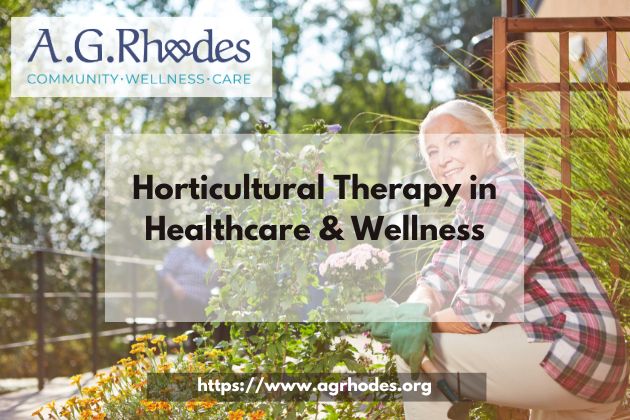The Role of Horticultural Therapy in Modern Healthcare
 Horticultural therapy has emerged as a powerful tool in holistic healthcare, helping individuals recover physically, emotionally, and mentally through the act of gardening and plant care. Used in hospitals, rehabilitation centers, senior care facilities, and even veteran support programs, horticultural therapy offers numerous benefits that promote healing and overall wellness.
Horticultural therapy has emerged as a powerful tool in holistic healthcare, helping individuals recover physically, emotionally, and mentally through the act of gardening and plant care. Used in hospitals, rehabilitation centers, senior care facilities, and even veteran support programs, horticultural therapy offers numerous benefits that promote healing and overall wellness.
How Horticultural Therapy Enhances Patient Recovery
Physical Rehabilitation and Motor Skill Development
Patients recovering from strokes, surgeries, or injuries often struggle with mobility and coordination. Gardening activities such as planting, watering, pruning, and harvesting help improve fine and gross motor skills, supporting physical rehabilitation. This is particularly beneficial in occupational therapy settings, where hands-on tasks promote dexterity and muscle strength.
Psychological Benefits for PTSD and Mental Health Disorders
Veterans and trauma survivors dealing with PTSD (Post-Traumatic Stress Disorder) have found immense relief through structured gardening programs. Horticultural therapy provides a calming environment, helping to reduce anxiety, stress, and depression. Engaging with nature fosters mindfulness, helping individuals process emotions and regain a sense of control over their lives.
Cognitive Stimulation for Seniors and Dementia Patients
For older adults, particularly those diagnosed with Alzheimer’s disease or dementia, horticultural therapy serves as an essential cognitive exercise. Gardening tasks involve memory recall, sensory stimulation, and problem-solving, helping to slow cognitive decline. The natural setting also reduces agitation and enhances mood, making it a preferred therapeutic intervention in memory care facilities.
Horticultural Therapy in Different Healthcare Settings
Hospitals and Rehabilitation Centers
Many modern hospitals integrate therapeutic gardens into their facilities, allowing patients to engage in light gardening as part of their recovery process. Studies have shown that exposure to green spaces speeds up post-operative healing, reduces pain perception, and lowers blood pressure. Gardening activities provide a structured, yet flexible, rehabilitation approach for patients recovering from injuries, strokes, or surgeries.
Senior Centers, Nursing Homes, and Assisted Living Facilities
Aging populations often face isolation, loneliness, and decreased physical activity. Horticultural therapy encourages seniors to remain active while also fostering social interactions and a sense of community. Gardening groups offer companionship, enhancing emotional well-being and mental stimulation.
Veterans’ Therapy Programs
For veterans struggling with PTSD, depression, or physical injuries, horticultural therapy has been widely implemented as a non-pharmacological treatment option. Engaging with plants provides a grounding experience, fostering resilience, patience, and relaxation. Programs such as farming initiatives, community gardens, and therapeutic greenhouse projects have been effective in supporting veterans’ mental health.
The Science Behind Horticultural Therapy’s Effectiveness
Reduced Stress and Anxiety
Studies indicate that spending time in green environments significantly lowers cortisol levels, the hormone associated with stress. Nature exposure is directly linked to improved mood, reduced symptoms of depression, and enhanced mental clarity.
Improved Cardiovascular and Respiratory Health
Gardening activities such as digging, raking, and planting are forms of light-to-moderate exercise, improving cardiovascular health, circulation, and lung function. Being outdoors also promotes vitamin D absorption, supporting bone health and immune function.
Enhanced Social Interaction and Emotional Support
Group horticultural activities foster friendships, teamwork, and social engagement, reducing feelings of loneliness and social withdrawal, which are common among seniors and those recovering from trauma.
How to Implement Horticultural Therapy in Healthcare Settings
Creating Therapeutic Gardens
Healthcare facilities can design outdoor or indoor gardens tailored to patients’ needs. Features like raised garden beds, wheelchair-accessible pathways, and sensory gardens enhance the experience for individuals with mobility challenges.
Incorporating Structured Gardening Programs
Therapists and caregivers can develop customized gardening programs that align with patients’ specific conditions. Programs may include:
- Adaptive gardening techniques for those with physical disabilities
- Memory gardens for dementia patients
- Community gardening projects for veterans and trauma survivors
Training Healthcare Professionals in Horticultural Therapy
Medical staff, therapists, and caregivers should receive specialized training in horticultural therapy principles to effectively integrate this practice into patient care. Certification programs are available for professionals seeking to specialize in therapeutic horticulture.
Conclusion
As healthcare continues to evolve, non-traditional therapies like horticultural therapy are gaining widespread recognition for their numerous benefits. From improving physical and cognitive function to enhancing emotional well-being, this therapy serves as a valuable addition to modern healthcare and wellness programs. By integrating horticultural therapy into hospitals, rehabilitation centers, senior care homes, and veteran programs, we can create healthier, more holistic healing environments.
A.G. Rhodes is one of only a few nursing homes that has a Horticultural Therapy program directed by a Registered Horticultural Therapy professional. Contact us today for more information.

